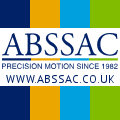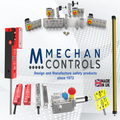
Posted to News on 24th Nov 2020, 00:00
Reliable detection of different objects
Time-of-Flight laser sensors can reliably detect objects of various colours and materials, based on the time difference between the emission of light and its return to the sensor. here, Martin Wyatt, Business Development Manager at Carlo Gavazzi UK, outlines some of the benefits and applications for these compact devices.

How do you detect objects of varying sizes and colours on a conveyor if it is difficult to wire-in a light beam emitter on one side of the belt and a receiver on the opposite side? The easy answer is to use a single Time-of-Flight sensor. Laser Time-of-Flight (ToF) sensors measure the actual time for a single laser pulse to leave the sensor and be reflected from an object back to the sensor’s receiver. Because light travels at a constant speed, the time lapse between the emission of the light pulse and its return to the sensor enables both the presence of an object and its distance from the sensor to be detected and measured. And, because the time taken for the light pulse to be reflected will be either longer or shorter for different sized objects, ToF devices can be used to sense the size of objects on a conveyor, for example.
In addition to stationary production plant applications, ToF devices can also be used as a cost effective alternative to ultrasonic devices on automated guided vehicles (AGVs), or service robots, where they can detect objects in the vehicle's path. Similarly ToF sensors can be used for automatic door control and other proximity sensing applications. ToF sensors can even be used in car tyre manufacturing plants because, unlike standard photoelectric sensors, the ToF laser sensing technology is virtually unaffected by the tyre's matt black surface finish. In fact, because laser-based ToF sensors work regardless of the object's colour or surface characteristics and because the sensors are unaffected by humidity, air pressure and temperature they are ideal for use in food and beverage production facilities.
ToF technology has developed rapidly in the past decade. ToF chips are increasingly used for motion sensing in gaming devices and to aide the autofocus feature of many mobile phone cameras. As a consequence, the controls industry is now reaping the benefits of rapid technological improvements and large scale chip production.
The laser technology used in many ToF devices has advanced significantly too. Carlo Gavazzi’s LD30 Time of Flight photoelectric laser sensor, for example, uses a low power Class 1 infrared laser light source driven by a modulated pulse. This makes it safe under all conditions of normal use because the maximum permissible exposure cannot be exceeded when viewing the laser with the naked eye. The laser enables the LD30 sensor to detect objects of any colour, material and surface finish at distances from 50mm up to 1000mm in a single, compact, cost-effective device.
A major benefit of the LD 30 sensor, for example, is that it can operate in standard I/O mode and, when connected to an IO-Link master, it then switches automatically to IO-Link communication. IO-Link is an open standard communication protocol that allows for the bi-directional exchange of data from the ToF sensor to the IO-Link master device and from the master to the sensing device. Communication is point to point, not on a network, so each ToF sensor talks directly to the IO-Link master controller. This can then transmit the sensor’s data over various networks or fieldbuses to make it available for immediate action or to save it for analysis in the future.
In IO-Link mode, the LD30 sensor becomes an intelligent device, which is easily customisable to meet an OEM’s requirements. Once the sensor is connected to the IO-Link port it enables access to a multitude of configuration parameters and advanced functionalities. These settings can be stored in the master controller and can always be changed if the need occurs, or they can be smoothly transferred to a new sensor in the case of sensor replacement
The LD30 sensor parameters that are adjustable via the IO-Link interface include:
- Sensing distance and hysteresis
- Sensing mode: single point or two point or window mode. In two-point mode, for example, long distance detection can be used to slow down an AGV while the short distance mode is used to being the vehicle to a full stop
- Timer functions: on-delay, off-delay, one shot leading edge or trailing edge
- Logic functions: AND, OR, X-OR and SR-FF
- External input
- Logging functions: maximum temperature, minimum temperature, operating hours, operating cycles, power cycles, minutes above maximum temperature, minutes below minimum temperature, etc
Using the LD30 sensor in IO-Link communication mode enables the sensor outputs to be monitored, or its operating parameters to be adjusted from virtually anywhere, to enable operators to make decisions based on real time data from the sensor to help improve efficiencies, minimise downtime and, hence, costs. It also enables problems to be speedily identified and resolved the moment they are detected by the sensor.
Carlo Gavazzi’s LD30 Time of Flight photoelectric laser sensors are independently certified for compliance with CE, UL, ECOLAB, TüV and FDA standards. The compact device measures just 11 x 31.5 x 21 mm and weighs less that 100g making it suitable for use in confined spaces. It is available in both an ABS or in a robust stainless steel IP69 housing in order to withstand high pressure cleaning processes.


















